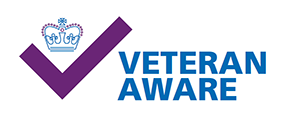Patient Information Leaflets - O
Welcome to the Patient Information Leaflets section
To search for a leaflet, please use the search facility on this page.
Please note if you have any questions or queries relating to the leaflets, please contact the telephone number which appears on the leaflet.
Disclaimer
The information leaflets on this internet site are intended to advise and benefit patients who intend to use, or are using, the clinical services provided by St Helens and Knowsley Teaching Hospitals NHS Trust.
The Trust does not accept responsibility for using the information contained in the leaflets for any other purpose than that described within them.
If you are concerned about your clinical condition you should seek qualified medical advice from your GP or the relevant clinical team at the hospital.
- Ophthalmology
Title - Botox treatment for blepharospasm and hemifacial spasm
Description - Blepharospasm is a medical condition that causes the muscles around your eyes to spasm involuntarily. It is thought to arise because of loss of control of the normal blink reflex. Frequent blinking or uncontrollable eye closure are common characteristics of blepharospasm. In the most severe cases, a person may be unable to open their eyes for several minutes. Some people find that their blepharospasm is worsened by certain things e.g. bright light, stress, social interactions etc. If you have blepharospasm, the pattern of the spasm may change throughout the day. For example, you may have few or no symptoms when you wake up in the morning, but they may start to appear or get worse when you are tired or stressed.Title - Botulinum Toxin treatment for Squint
Description - Botulinum toxin ( or “BT”) causes a temporary, partial or complete, paralysis (weakness) of the muscle into which it has been injected. It is a way of changing the position (or alignment) of the eyes to improve the appearance, or help with double vision.Title - Contact Lens Charges Explained
Description - The Optometry Department at St Helens Hospital provides a specialist contact lens service. This is for patients who have a medical need for contact lenses. Examples include some corneal problems, very high prescriptions and protective "bandage" or prosthetic lenses. The hospital will assess your eligibility.Title - Epiretinal membrane
Description - An epiretinal membrane is a condition where a very thin layer of scar tissue forms on the surface of the central retina, where the vision is sharpest. This central part of the eye is called the macula, which is made of special nerve cells and it provides our sharp central vision needed for seeing fine detail (reading and driving etc). The surface of the macula is normally smooth and crease-free. When an epiretinal membrane forms over the macula, it may contract and crumple up the macula resulting in distorted and/or blurred vision.Title - Fundus Fluorescein Angiography (FFA)
Description - Fundus fluorescein angiography is a diagnostic photographic procedure that uses a contrast dye to give a detailed view of the retinal circulatory system at the back of your eye. This shows any blocked or leaking blood vessels, or new blood vessel formation. This assists the doctor in deciding on the best treatment for your condition.Title - Macular hole
Description - The macula is the name given to a sensitive part of the retina. The retina is like a photographic film at the back of the eye that captures the image. The macula is the part of the retina that enables us to make out fine details and to see colours. The macula is the name given to a sensitive part of the retina. The retina is like a photographic film at the back of the eye that captures the image. The macula is the part of the retina that enables us to make out fine details and to see colours.Title - Nystagmus
Description - Nystagmus is a rhythmical, repetitive and involuntary movement of the eyes. It is often known as jerky eyes or wobbly eyes. It is usually from side to side, but sometimes up and down or in a circular motion. Both eyes can move together or independently of each other. A person with nystagmus has no control over this movement of the eyes.Title - Peripheral iridotomy
Description - There are many different types of glaucoma and the treatments are varied. Laser iridotomy is a treatment that is used for patients who have, or who are at risk of developing, acute angle closure glaucoma, or who have chronic closed or narrow angle glaucoma. - Oral and Maxillofacial Unit
Title - Jaw Cyst
Description - Post operative patient instructions following Jaw Cyst surgeryTitle - Post operative patient instructions Soft Tissue
Description - Post-Operative Instructions Soft Tissue - Orthoptics
Title - Keratoconus
Description - The cornea is the clear window at the front of the eye and is usually a round, even shape. Keratoconus (pronounced keh-rah- toe-cone-us) is when the cornea becomes thinner and bulges outwards in a cone shape. Keratoconus can be a progressive condition and can get worse gradually over time. It often affects one eye first but both eyes are usually involved eventually. - Outpatient
Title - Outpatients Department Information
Description - What to expect during your appointment in Outpatients.Title - Reablement Team Chair Stretches
Description - This leaflet shows chair stretch exercises.Title - Shoulder exercises
Description - Shoulder exercises Patient information leaflet.






